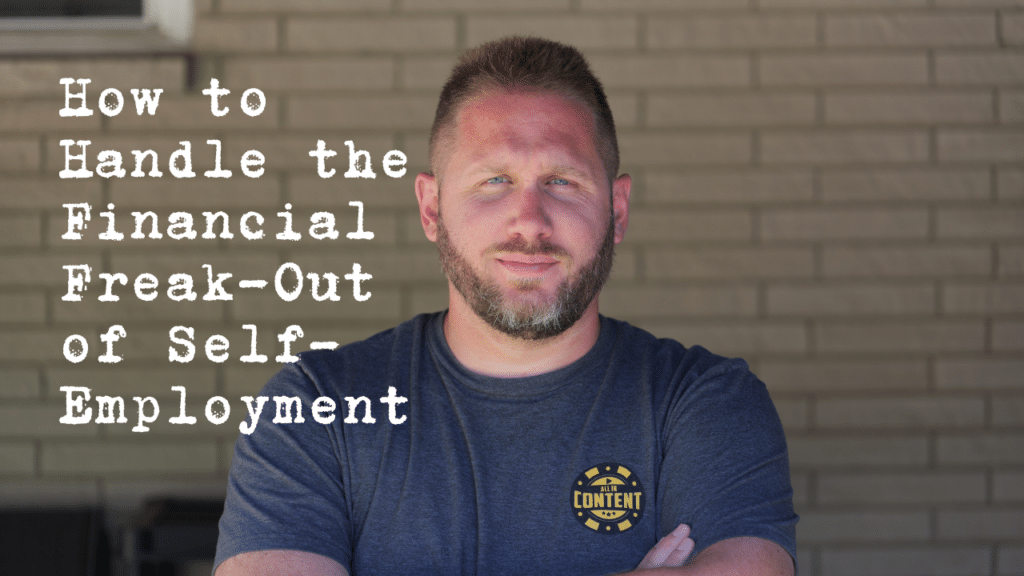Let’s talk about the elephant in the room: money. When you leave a steady paycheck behind for the unpredictable world of self-employment, it’s easy to feel like the financial rug has been pulled out from under you. Pay cuts and panic? Welcome to the club.
But here’s the good news: financial freak-outs are normal—and manageable. Whether you’re facing a slow month, a canceled contract, or the ups and downs of growing your business, you don’t have to let money stress run your life. Let’s dive into how to handle the roller coaster and come out stronger on the other side.
Why Self-Employment Can Feel Like Financial Whiplash
The 9-to-5 world trains you to expect stability: a paycheck every two weeks, predictable expenses, and benefits to fall back on. Self-employment flips that script. Here’s why:
- Income isn’t consistent: Some months are booming, while others barely cover the bills.
- Expenses can spike unexpectedly: Tools, marketing, or hiring costs add up fast.
- The pressure is all on you: If you don’t make sales, no one’s cutting you a check.
The transition is tough, but it’s also empowering—because once you learn to navigate the financial waves, you’re unstoppable.
How to Create a Financial Safety Net
The best way to handle financial uncertainty is to prepare for it. Here’s how to set yourself up for success:
1. Build a Buffer
Save 3-6 months’ worth of living expenses before going all in on self-employment. This cushion gives you breathing room during slow periods.
2. Separate Business and Personal Finances
Open a separate bank account for your business. Track income and expenses meticulously to avoid nasty surprises at tax time.
3. Diversify Your Income Streams
Don’t rely on a single client or service. Offer multiple products, packages, or revenue streams to spread the risk.
4. Automate Savings
Set up automatic transfers to a savings account each month. Even small contributions add up over time.
Managing Pay Cuts Without Losing Your Mind
Pay cuts are inevitable in self-employment, especially during the early stages. Here’s how to keep calm and carry on:
1. Adjust Your Mindset
Understand that income fluctuations are part of the game. Instead of panicking, focus on what you can control—your effort, strategy, and adaptability.
2. Cut Non-Essentials
Temporarily scale back on luxuries like eating out, subscriptions, or travel until your income stabilizes.
3. Communicate with Vendors
If you’re struggling with business expenses, reach out to service providers. Many offer flexible payment plans or discounts.
4. Double Down on Sales
When cash flow dips, prioritize revenue-generating activities like prospecting, pitching, or launching a new offer.
Turning Financial Freak-Outs into Opportunities
Every challenge is an opportunity to get smarter about money. Here’s how to thrive even during tight months:
- Learn to forecast: Track trends in your income and expenses to anticipate slow periods.
- Negotiate better contracts: Build payment schedules, deposits, or retainers into your agreements to ensure steady cash flow.
- Upskill: Invest in learning high-demand skills that command premium rates.
Tight months aren’t failures—they’re lessons in resilience and resourcefulness.
The Freedom of Financial Control
Here’s the paradox of self-employment: even with its financial ups and downs, it offers a kind of security no job ever can. Why? Because you’re in control.
- You set your rates: No more waiting for a raise—you decide your worth.
- You control your time: Work more during high-demand periods and scale back when needed.
- You create your own opportunities: The sky’s the limit when you’re the boss.
FAQs
How do I handle the fear of inconsistent income?
Start by building a financial buffer, diversifying your income streams, and focusing on revenue-generating activities during slow periods.
What if I have a bad month (or two)?
Take a close look at your expenses, double down on sales, and use the time to refine your strategy or upskill.
Should I take out a loan if money gets tight?
Loans can help in emergencies but should be a last resort. Exhaust other options like negotiating payment plans or cutting expenses first.
How do I plan for taxes as a self-employed person?
Set aside 20-30% of your income for taxes and work with a professional to ensure you’re taking advantage of deductions.
How can I avoid burnout while trying to make more money?
Focus on high-value tasks, delegate where possible, and remember to take breaks. Overworking isn’t sustainable.
What if self-employment doesn’t work out financially?
It’s not failure—it’s feedback. Use the experience to pivot, learn, and build something even better.
Conclusion: A Personal Note from Chris
When I first made the leap into self-employment, I thought I had my finances all figured out. I had some savings, a few clients, and a lot of optimism. But then reality hit: clients dropped off, unexpected expenses piled up, and the steady income I’d taken for granted was gone.
I panicked—more than once. But each time, I figured it out. I cut back, hustled harder, and found new ways to generate income. And you know what? Those tough times taught me lessons that no corporate paycheck ever could.
Here’s the truth: financial freak-outs are part of the entrepreneurial journey, but they don’t have to define it. With preparation, resilience, and a willingness to adapt, you can weather any storm.
If you’re feeling the financial pressure, take a deep breath. Look at what you can control, make a plan, and trust that you’re capable of handling whatever comes your way. Self-employment isn’t easy—but damn, it’s worth it.
You’ve got this. Tight months don’t last—resilient entrepreneurs do.








